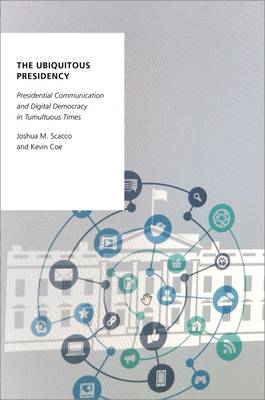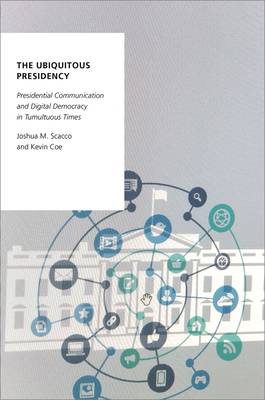
- Retrait gratuit dans votre magasin Club
- 7.000.000 titres dans notre catalogue
- Payer en toute sécurité
- Toujours un magasin près de chez vous
- Retrait gratuit dans votre magasin Club
- 7.000.0000 titres dans notre catalogue
- Payer en toute sécurité
- Toujours un magasin près de chez vous
The Ubiquitous Presidency
Presidential Communication and Digital Democracy in Tumultuous Times
Joshua M Scacco, Kevin Coe
114,95 €
+ 229 points
Description
American democracy is in a period of striking tumult. The clash of a rapidly changing socio-technological environment and the traditional presidency has led to an upheaval in the scope and standards of executive leadership. Yet research on the presidency, although abundant, has been slow to adjust to changing realities associated with digital technologies, diverse audiences, and new elite practices. Meanwhile, journalists and the public continue to encounter and shape emerging presidential efforts in deeply consequential ways. Joshua Scacco and Kevin Coe bring needed insight to this complex situation by offering the first comprehensive framework for understanding contemporary presidential communication in relation to the current socio-technological environment. They call this framework the "ubiquitous presidency." Scacco and Coe argue that presidents harness new opportunities in the media environment to create a nearly constant and highly visible presence in political and nonpolitical arenas. They do this by trying to achieve longstanding presidential goals, namely visibility, adaptation, and control. However, in an environment where accessibility, personalization, and pluralism are omnipresent considerations, the strategies presidents use to achieve these goals are very different from what we once knew. Using this novel framework as a conceptual anchor, The Ubiquitous Presidency undertakes one of the most expansive analyses of presidential communication to date. Scacco and Coe employ a wide variety of approaches--ranging from surveys and survey-experiments, to large-scale automated content and network analyses, to qualitative textual analysis--to uncover new aspects of the intricate relationship between the president, news media, and the public. Focusing on the presidency since Ronald Reagan, and devoting particular attention to the cases of Barack Obama and Donald Trump, the book uncovers remarkable shifts in communication that test the institution of the presidency and, consequently, democratic governance itself.
Spécifications
Parties prenantes
- Auteur(s) :
- Editeur:
Contenu
- Nombre de pages :
- 244
- Langue:
- Anglais
- Collection :
Caractéristiques
- EAN:
- 9780197520635
- Date de parution :
- 26-03-21
- Format:
- Livre relié
- Format numérique:
- Genaaid
- Dimensions :
- 243 mm x 160 mm
- Poids :
- 481 g

Les avis
Nous publions uniquement les avis qui respectent les conditions requises. Consultez nos conditions pour les avis.






